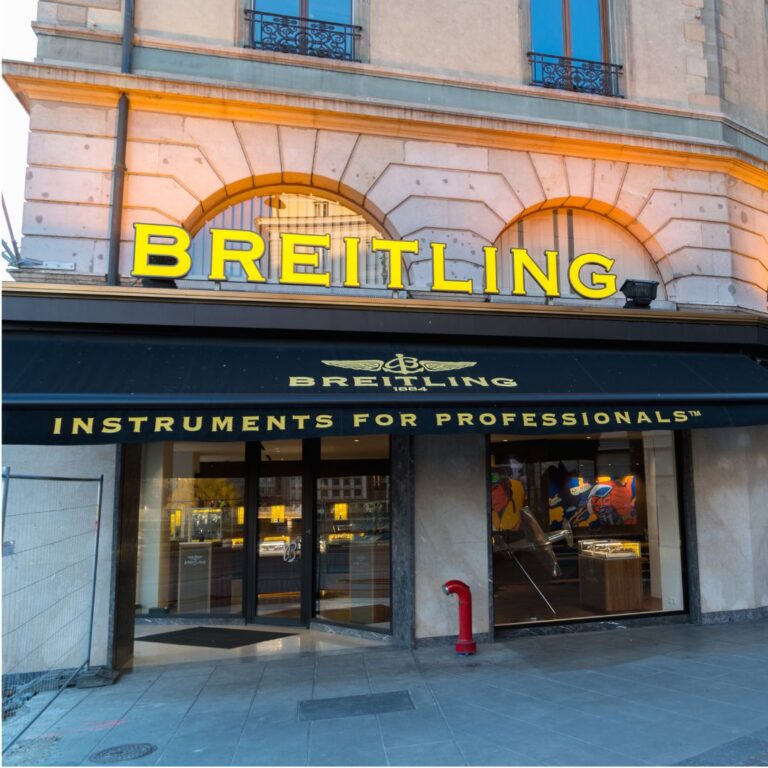Breitling, a Swiss luxury watchmaker renowned for its precision chronographs and strong association with aviation, has a rich history that spans over a century. This article delves into the history of Breitling, highlighting key milestones and the brand’s evolution into a global symbol of excellence and innovation.
Founding and Early Years
Breitling was founded in 1884 by Léon Breitling in the Swiss Jura Mountains town of Saint-Imier. The company quickly gained a reputation for producing high-precision pocket watches, chronographs, and other timekeeping instruments.
- 1884: Léon Breitling establishes the company, focusing on precision instruments for scientific and industrial purposes.
- 1892: The company moves to La Chaux-de-Fonds, a center of Swiss watchmaking, to expand its operations.
Innovation in Chronographs
Breitling became synonymous with innovation in chronographs, introducing several groundbreaking features that revolutionized timekeeping.
- 1915: Breitling introduces one of the first wrist-worn chronographs, featuring a separate push-piece above the crown to start, stop, and reset the timer.
- 1923: The company patents an independent chronograph push-piece, separating the start/stop function from the reset function, allowing more precise timing.
- 1934: Breitling introduces the second independent reset push-piece, establishing the standard configuration for modern chronographs.
Association with Aviation
Breitling’s association with aviation began in the 1930s and became a defining aspect of the brand’s identity.
- 1936: Breitling becomes the official supplier of onboard chronographs for the Royal Air Force, marking the beginning of its close relationship with aviation.
- 1952: The launch of the Navitimer, a revolutionary chronograph with a circular slide rule capable of performing all necessary flight calculations, cements Breitling’s status as the preferred watchmaker for pilots.
Expansion and Diversification
In the latter half of the 20th century, Breitling expanded its product line and solidified its reputation for excellence.
- 1962: Astronaut Scott Carpenter wears a Breitling Navitimer Cosmonaute during his orbital flight aboard Aurora 7, making Breitling the first Swiss wrist chronograph in space.
- 1979: Ernest Schneider, an aviation enthusiast and watchmaker, acquires Breitling, ensuring the brand’s survival and continued innovation during the quartz crisis.
Modern Era and Technological Advancements
Breitling has continued to innovate and expand its influence in the modern era, embracing new technologies and maintaining its commitment to precision.
- 1984: Breitling relaunches the Chronomat, featuring the automatic chronograph movement, which becomes a flagship model for the brand.
- 1995: Introduction of the Emergency watch, equipped with a built-in emergency distress beacon, showcasing Breitling’s dedication to functionality and safety.
- 2015: Breitling introduces the Breitling B55 Connected, a smartwatch designed for pilots, integrating traditional watchmaking with modern connectivity.
Commitment to Sustainability and Corporate Responsibility
In recent years, Breitling has focused on sustainability and social responsibility as key components of its brand values.
- Sustainable Practices: Breitling has implemented eco-friendly practices in manufacturing and packaging, using recycled materials and reducing carbon emissions.
- Ocean Conservancy Partnership: The brand partners with Ocean Conservancy to support ocean preservation efforts, launching special edition watches to raise awareness and funds.
Breitling’s history is a testament to its enduring commitment to precision, innovation, and excellence. From its early days producing high-precision instruments to its pivotal role in aviation and space exploration, Breitling has consistently pushed the boundaries of watchmaking. Today, Breitling continues to uphold its legacy through innovative designs, technological advancements, and a commitment to sustainability, ensuring its place as a leading name in the luxury watch industry.

